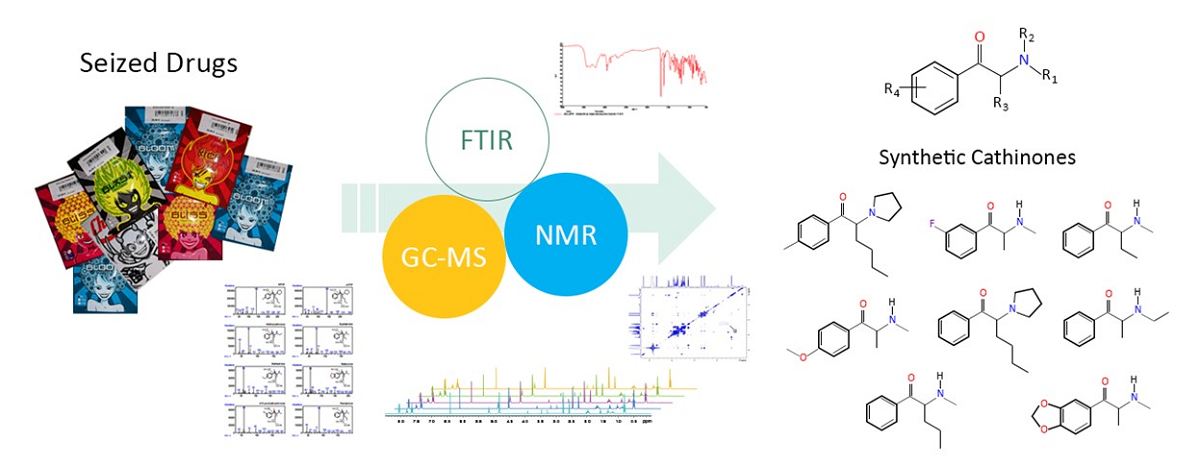The innovation of the new psychoactive substances (NPS) market requires the rapid identification of new substances that can be a risk to public health, in order to reduce the damage due to their use. Twelve seized products suspected to contain illicit substances were analyzed by attenuated total reflectance Fourier transform infrared spectroscopy (ATR-FTIR), gas chromatography coupled to mass spectrometry (GC-MS), and nuclear magnetic resonance spectroscopy (NMR). Synthetic cathinones (SCat) were found in all products, either as a single component or in mixtures. Infrared spectra of all products were consistent with the molecular structure of SCat, showing an intense absorption band at 1700–1674 cm‐1, corresponding to the carbonyl stretching, a medium/strong peak at 1605-1580 cm-1, indicating stretching vibrations in the aromatic ring (C=C) and bands with relative low intensity at frequencies near 2700–2400 cm-1, corresponding to an amine salt. It was possible to identify a total of eight cathinone derivatives by GC-MS and NMR analysis: 4’-methyl-α-pyrrolidinohexanophenone (MPHP), α-pyrrolidinohexanophenone (α-PHP), 3-fluoromethcathinone (3-FMC), methedrone, methylone, buphedrone, N-ethylcathinone, and pentedrone. Among the adulterants found in these samples, caffeine was the most frequently detected substance, followed by ethylphenidate. These results highlight the prevalence of SCat in seized materials of the Portuguese market. Reference standards are usually required for confirmation, but when reference materials are not available, the combination of complementary techniques is fundamental for a rapid and an unequivocal identification of such substances.

